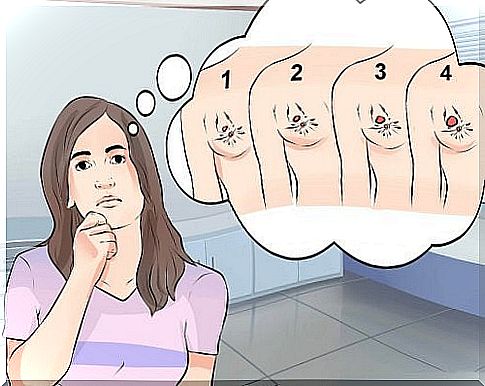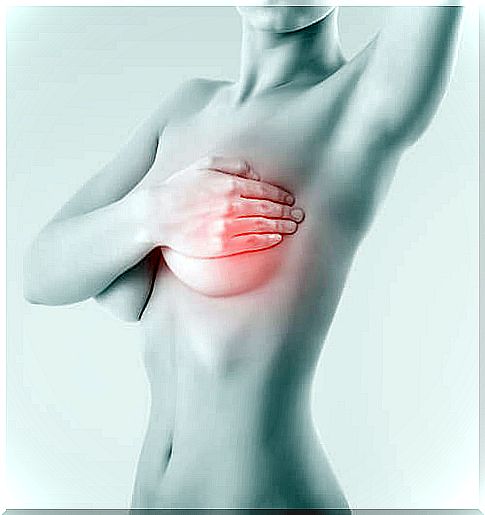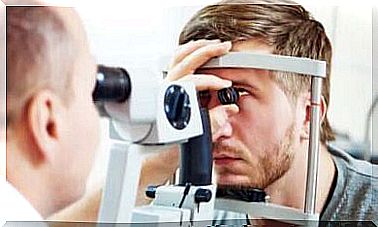The Different Types Of Breast Cancer, Symptoms And Treatment

Breast cancer is a chronic disease that occurs when breast cell tissues begin to change and grow uncontrollably. In this article we will talk about the different types of breast cancer, symptoms and treatment!
These cells continue to form a conglomerate of cells known as a tumor, which can be benign or malignant depending on the way the tumor develops.
If the cells continue to grow and are able to spread to other parts of the body, it is a malignant tumor.
Forms of breast cancer
Breast cancer can develop through an invasive or non-invasive form. If the cancer is invasive, it spreads to the nearby tissue, while the non-invasive form of cancer develops only in the milk ducts and lumps.
Knowing that the breast zone is where the tumor forms, we can distinguish between the following types of breast cancer:
Ductal carcinoma

Ductal carcinoma is the most common form of breast cancer.
It starts in the cells that cover the inside of the milk ducts. If it only develops in the duct, it is ductal carinoma in situ (DCIS). On the other hand, if the cancer spreads outside the canal, it is called invasive ductal carcinoma.
Lobular carcinoma
Lobular carcinoma is a type of cancer that develops in the breast lumps.
Other forms
In some cases, although they are rare compared to ductal and lobular carcinoma, breast cancer can also be: medullary, mucous, tubular, metaplastic or papillary breast cancer.
Causes of breast cancer

Apart from the family history, it is important to emphasize that the risk of getting breast cancer increases after reaching the age of 50. This is especially true if there is a family history of ovarian cancer or late menopause.
Other risk factors are:
- Obesity
- Alcoholism
- Exposure to ionized radiation
- Undergoing hormonal replacement therapy
- Early onset of menstruation.
Breast cancer symptoms
In most cases, breast cancer does not show obvious symptoms in its initial stages.
In light of this, it is crucial to regularly check your breasts at home (self-check) as well as with a health professional. As cancer progresses, symptoms may include:
- Hard, painless lump in the armpit, with a prickly outline.
- Changes in the texture, shape or structure of the breast or nipples.
- Formation of a palpable lump or lump, usually painless.
- foul-smelling fluid released from the nipple that may be bloody, yellow or greenish.
In the case of male breast cancer, the cancer can cause pain and tenderness in the breast in addition to lump formations.
The symptoms of advanced cancer include:
- Skin sores,
- Bone pain,
- Chest pain,
- Weakness and fatigue,
- Significant weight loss,
- Inflammation of the lymph nodes in the forearm area.
Diagnosis

Diagnosis of breast cancer starts with a physical examination. Then it continues with an examination of both the breasts, the forearm area, the neck and the chest.
If there is reason to suspect the disease, or if the patient exhibits important risk factors, a physician specialist may perform a series of tests to help confirm the cancer.
Among these are:
- Mammography : For the detection of suspicious zones in the breast using X-rays.
- Magnetic resonance imaging (MRI scan) : Uses an electromagnetic field to obtain images that are intended to identify tumors or study abnormal changes in the mammogram.
- Breast ultrasound : Performed with mammograms and they help determine if the tumors are fluid or solid.
- Breast biopsy : Use of methods such as a needle, image-guided biopsy, stereotactic or open biopsy.
- Computerized tomography : Determines if the cancer has spread outside the breast tissue.
- Sentinel lymph node biopsy: The purpose of identifying whether the cancer cells have spread to the lymph nodes.
Treatment
The treatment of breast cancer takes into account several factors, such as: the cancer, the stage of the cancer, the sensitivity to certain hormones, and if the cancer produces an excess of a protein called HER2 / neu.
Several of the most important treatments are:
- Chemotherapy : A method that uses drugs to destroy cancer cells.
Radiation treatment. The purpose is to destroy cancerous tissue. - Surgery to remove cancerous tissue: If the breast lump is removed, it is known as a lumpectomy. Meanwhile, a mastectomy i.e. removal of the entire breast and possibly neighboring area also an option.
- Targeted therapy: Hormonal therapy is an example of such treatment. It is used to block certain hormones that stimulate the growth of malignant cells. It uses medicine to attack gene changes in the cancer cells.
After receiving the treatment best suited for their case, some women continue with medication for a period of time. No matter what, all patients must follow the medical guidelines to undergo the appropriate tests to monitor cancer recurrence or growth of another form of breast cancer.









